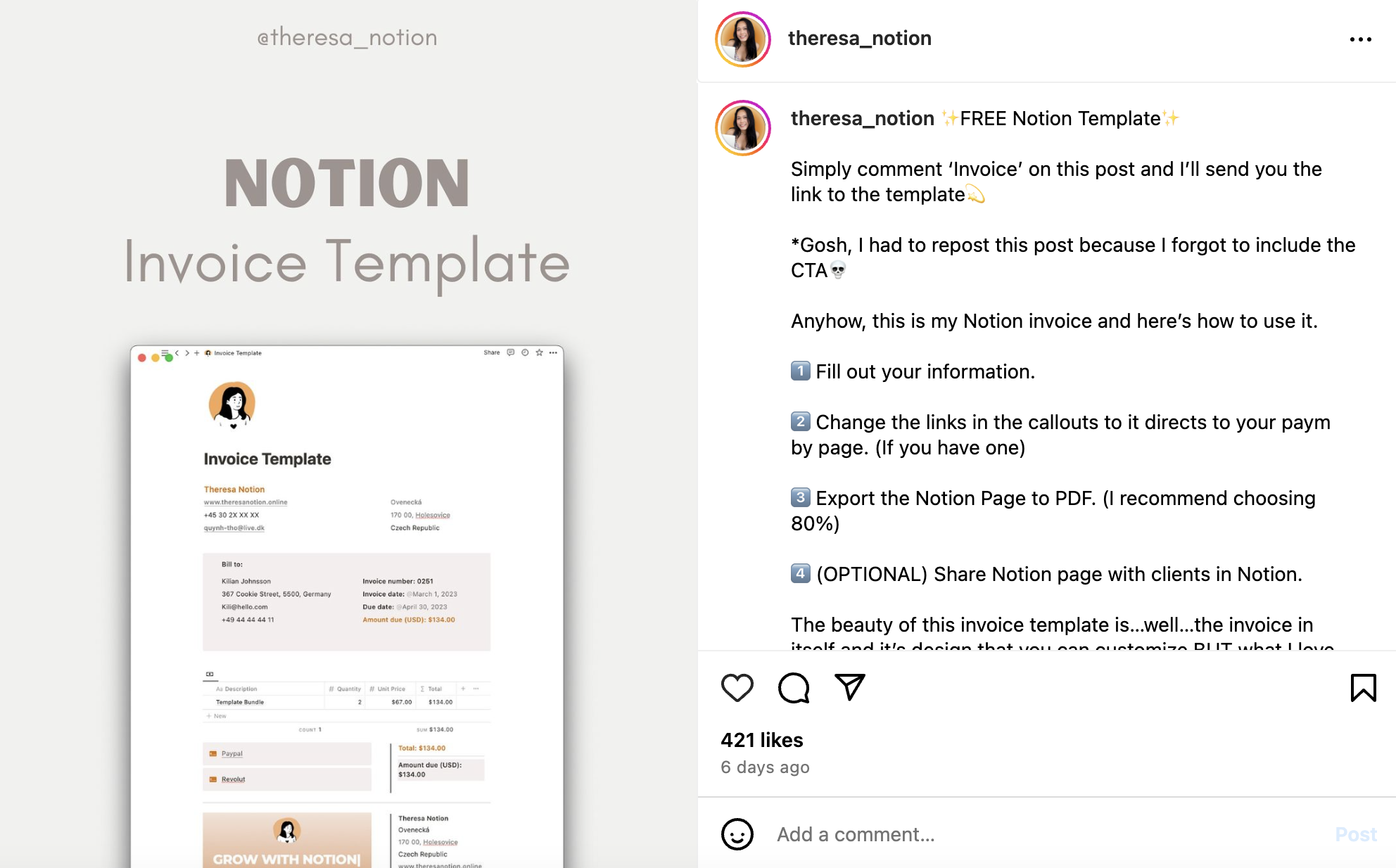
In today’s fast-paced digital world, where consumers are bombarded with information constantly, our brains are wired to process visuals faster than text.
Visual marketing, with its captivating images, videos, infographics, and more, offers a powerful solution to cut through the noise and leave a lasting impression. This article will delve into the world of visual marketing, exploring its key benefits, essential content types, and effective strategies to help you elevate your brand and connect with your audience on a deeper level.
Table of Contents
Defining Visual Marketing
Visual marketing involves using images, videos, and other visual aids to promote products or services. It is crucial for capturing audience attention quickly and conveying messages effectively.
Brand Communication
Visual elements, such as logos, colors, and graphics, are vital in creating a consistent brand image across various platforms. They help in building brand recognition and loyalty among customers.
Moreover, the use of compelling visuals can evoke emotions, making the brand more relatable to the target audience. This emotional connection can lead to increased engagement and conversions.

Digital Advancements
With the rise of social media and online platforms, visual marketing has evolved significantly. Businesses now have access to a wide range of tools and technologies to create captivating visual content.
From interactive videos to immersive augmented reality experiences, digital media advancements have opened up new possibilities for brands to engage with their audience creatively.
Pros and Cons
- Pros:
- Enhances brand visibility and recognition.
- Increases engagement and conversion rates.
- Allows for storytelling in a visually appealing manner.
- Cons:
- Requires continuous innovation to stay ahead of competition.
- Quality visual content production can be time-consuming and costly.
Essential Visual Content Types
Images
Images are essential visual components that play a crucial role in capturing the attention of visitors. They are powerful tools for conveying emotions, showcasing products, and creating a memorable brand identity. By incorporating high-quality images into your content, you can effectively engage groups of people and leave a lasting impression.
Videos
Videos are dynamic content pieces that offer a unique way to connect with audiences. They have the ability to convey complex information in a simple and engaging manner. Through videos, businesses can add a personal touch to their messaging, making it easier to establish a connection with viewers on a more emotional level.
Infographics
Infographics are a blend of text and visuals designed to present information in a clear and concise format. These visual objects are highly effective in simplifying complex data and statistics, making them easier for audiences to digest. By using infographics, businesses can deliver key messages quickly and efficiently, increasing CTA engagement rates.
Power of Images and Videos
Attention, Retention, and Conversions
Visuals are the workhorses of marketing, grabbing attention quickly and boosting information retention. Visuals like videos can significantly influence purchasing decisions.
According to Gitnux Marketdata Report 2024, brands that featured images in their Facebook post received 87% of total engagements; tweets incorporating images garnered 160% more retweets compared to those without. Moreover, infographics receive three times as many likes and shares on social media compared to any other content type. This translates to increased conversions for businesses that leverage the power of visual marketing.
Crafting Engaging Infographics
Data Visualization
Data visualization plays a crucial role in transforming complex information into easily digestible content. By utilizing graphs, charts, and diagrams, businesses can effectively communicate information to their audience. Visual representations of data not only enhance understanding but also increase engagement.
Visualizing data through infographics helps in simplifying intricate details and statistics. Utilize various types of charts like pie charts, bar graphs, or line graphs to present information in a visually appealing manner. Incorporating relevant images and icons can further enhance the overall look of the infographic.
Design Tips
When designing infographics, focus on creating visually appealing layouts that capture the audience’s attention instantly. Use vibrant colors that complement each other to make the infographic visually appealing. Ensure that the font is legible and consistent throughout the design.
- Utilize different shapes and sizes to create visual interest and hierarchy within the infographic.
- Keep the design simple and clutter-free to avoid overwhelming the audience with excessive information.
- Incorporate white space strategically to guide the reader’s eye and improve overall readability.
Audience Resonance
To ensure that your infographics resonate with the target audience, consider their preferences and interests. Tailor the design elements, color schemes, and content to align with what appeals most to your demographic. Understanding your audience’s needs is key to creating infographics that generate leads and encourage clicks.

The Influence of Memes and Quotes
Memes, quotes, and other visual elements can significantly enhance your brand’s visibility and perception.
Humor-infused memes can help humanize your brand, making it more approachable and fostering a sense of community among followers.
Similarly, powerful quotes, especially when paired with visually-appealing design, can position your brand as an authority and establish a deeper connection with your target audience. This is particularly effective on platforms like LinkedIn, where thought-provoking quotes can spark meaningful conversations and drive engagement.
By consistently using these elements across all marketing channels, you can create a strong and recognizable brand identity. This visual storytelling approach leaves a lasting impression on consumers, leading to increased brand loyalty and trust, ultimately fostering long-term customer relationships.

Visual Marketing Effectiveness
Engagement Strategies
Visual marketing enhances engagement by leveraging compelling images and videos to captivate the target audience. Incorporating visually appealing content in content marketing strategies significantly boosts user interaction.
Utilizing high-quality visuals, such as infographics and interactive videos, can effectively convey messages to the audience. This approach not only attracts attention but also ensures better retention of information.
Brand Perception Impact
Visual content plays a pivotal role in shaping brand perception and recognition. By integrating consistent visual elements across all marketing channels, businesses can establish a strong brand identity.
Consistent branding through visual storytelling helps create a memorable impression on consumers, leading to increased brand loyalty and trust. This fosters long-term relationships with customers.
For example, McDonald’s demonstrates remarkable brand consistency through various elements such as its iconic golden arches logo, the widely recognized “I’m lovin’ it” tagline, consistent menu options, uniform store layouts, and efficient service. Additionally, the use of a vibrant yellow and red color scheme, a playful brand persona, and an upbeat tone of voice further reinforces McDonald’s overarching identity across its branding endeavors.

Storytelling for Brand Messaging
Visual storytelling serves as a powerful tool for conveying brand messages in a compelling manner. By weaving narratives through captivating visuals, businesses can evoke emotions and connect with their audience on a deeper level.
Through creative storytelling techniques, brands can communicate their values, mission, and unique selling propositions effectively. This resonates with consumers and differentiates the brand from competitors.
Best Practices in Visual Marketing
Aligning Elements
Visual marketing’s success hinges on aligning images, videos, and graphics with textual content to convey a cohesive message. When visuals complement text, engagement and understanding soar.
Strive for a harmonious blend where visuals enhance the written message, guiding viewers towards a deeper understanding of the content. This synergy captivates audiences, fostering lasting impressions.
Providing Value
To excel in visual marketing, prioritize being helpful and offering value to your audience through captivating visuals. Informative images or videos that educate or entertain viewers can significantly boost engagement levels.
Consider creating infographics, how-to videos, or interactive content that not only grabs attention but also enriches the viewer’s experience. By adding value through visuals, you establish credibility and trust with your audience.

Consistency and Quality
Consistency is key in visual marketing; maintaining a uniform style, color palette, and tone across all visual elements reinforces brand identity. This uniformity builds brand recognition and fosters a sense of reliability among consumers.
Quality should never be compromised in visual marketing efforts. High-resolution images, professionally produced videos, and well-designed graphics elevate the overall perception of your brand. Investing in quality visuals demonstrates a commitment to excellence.
Inspiring Visual Marketing Examples
Creative Branding
Many renowned brands like Nike and Coca-Cola have set the bar high with their visually appealing logos. These logos are not just symbols; they represent the brand’s identity and values. For example, Nike’s swoosh logo is simple yet powerful, evoking a sense of movement and athleticism.

Engaging Social Media Campaigns
Brands such as Starbucks and Airbnb have excelled in creating visually stunning social media campaigns that resonate with their audience. Starbucks’ Instagram page is a perfect blend of aesthetically pleasing images of their products and user-generated content, creating a strong emotional connection with their followers.
Website Design Excellence
When it comes to website design, companies like Apple and Google shine through their sleek and user-friendly interfaces. Apple’s website is a masterpiece of simplicity and elegance, guiding visitors seamlessly through their products and services. Google’s homepage, known for its minimalist design, focuses on providing users with quick access to information.
Key Takeaways
- Consistency in visual branding is crucial for building brand recognition.
- A compelling story behind the visuals can create a deeper connection with the audience.
- User-generated content can be a powerful tool in engaging customers and fostering brand loyalty.
Implementing Effective Strategies
Setting Objectives
Set clear objectives before diving into visual marketing campaigns. Define goals to measure success accurately.
Visual marketing can enhance brand awareness, drive engagement, and boost conversions. It’s crucial to align objectives with overall business goals.
Continuous Optimization
Regularly analyze performance data to identify strengths and weaknesses of visual content. Optimize strategies based on insights.
A/B testing different visuals can help determine what resonates best with the target audience. Stay agile and adaptable in response to changing trends.
Creative Approach
Experiment with innovative ways to present visual content. Think outside the box to create unique and compelling visuals.
Utilize a mix of formats such as images, videos, infographics, and GIFs to cater to diverse audience preferences. Keep up with emerging trends in visual marketing.
For instance, the advertisement for the Schusov State Museum of Architecture cleverly suggests that the structures we encounter are merely the surface, inviting viewers to delve deeper into their stories within the museum’s walls.

Final Remarks
The world of visual marketing is constantly evolving, with new trends and technologies emerging all the time. By staying informed, embracing experimentation, and tailoring your approach to your target audience, you can harness the immense power of visuals to forge lasting connections with your customers.
Remember, visual marketing is not just about aesthetics; it’s about weaving captivating narratives that resonate with your brand’s core values. So, embark on this exciting journey of visual storytelling, watch your brand come alive, and witness the transformative impact it has on your marketing success.
Related Article:
The following article may contain the author’s opinions and interpretations of the subject matter. Any of the products, services, or platforms mentioned is not sponsored or affiliated.
Featured image was created with the assistance of DALL·E by ChatGPT
